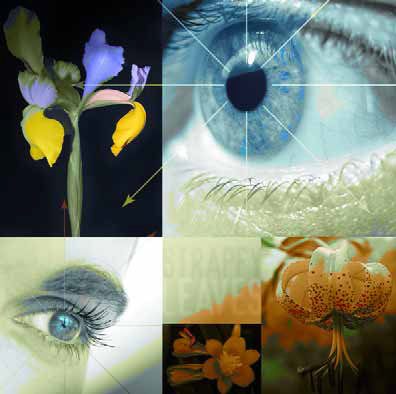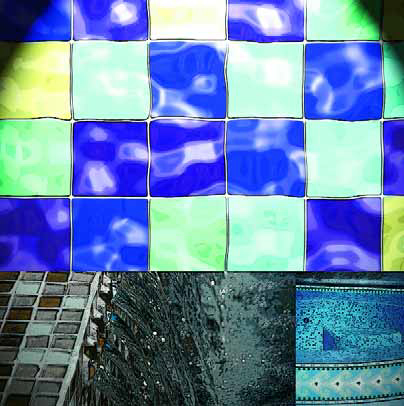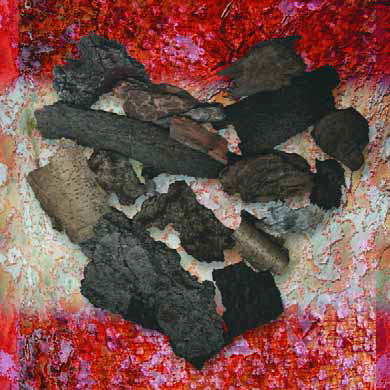texture
Most of my clients don't know a Pittosporum from a Loropetalum - nor would I expect them to. Unfortunately, however, this often leaves me to describe plants to them, a process that often makes me feel like I'm reenacting that television commercial where the homeowner tries to mimic the creature seen crawling across the kitchen floor for an exterminator: I'll stand there with my arms up or out, attempting to look like the botanical specimen I'm suggesting for use in their garden. One of the easiest groups of plants to describe in this or any other way is a collection I call the strappy-leaf plants. I didn't make up the term, and I'm sure many of you have also used it yourselves to describe plants with foliage that looks like straps - generally long strips that emerge from a central clump and arc up, sometimes flopping over to create
Most of my clients don't know a Pittosporum from a Loropetalum - nor would I expect them to. Unfortunately, however, this often leaves me to describe plants to them, a process that often makes me feel like I'm reenacting that television commercial where the homeowner tries to mimic the creature seen crawling across the kitchen floor for an exterminator: I'll stand there with my arms up or out, attempting to look like the botanical specimen I'm suggesting for use in their garden. One of the easiest groups of plants to describe in this or any other way is a collection I call the strappy-leaf plants. I didn't make up the term, and I'm sure many of you have also used it yourselves to describe plants with foliage that looks like straps - generally long strips that emerge from a central clump and arc up, sometimes flopping over to create
In a real sense, I want to build antiques: My goal in designing and shaping water walls has always been to develop systems of beauty that will be around and appreciated decades or even centuries from now. Not only are they built to the highest standards of quality - as are many antiques - but they're also meant to hold running water year after year. I don't know who created the first water wall, but my best guess is that they've been produced in one form or another since the late 1960s or early '70s. I became aware of them in the early '80s, at which point a number of craftspeople were making them from stone, copper, and bronze. Some of these products aspired to be works of sculptural art, but for the most part I thought that the medium's artistic potential hadn't been fully explored or expressed. My idea at the time was to expand the concept with respect to shapes, sizes, materials and styles. I also wanted to check into the possibilities of combining
In a real sense, I want to build antiques: My goal in designing and shaping water walls has always been to develop systems of beauty that will be around and appreciated decades or even centuries from now. Not only are they built to the highest standards of quality - as are many antiques - but they're also meant to hold running water year after year. I don't know who created the first water wall, but my best guess is that they've been produced in one form or another since the late 1960s or early '70s. I became aware of them in the early '80s, at which point a number of craftspeople were making them from stone, copper, and bronze. Some of these products aspired to be works of sculptural art, but for the most part I thought that the medium's artistic potential hadn't been fully explored or expressed. My idea at the time was to expand the concept with respect to shapes, sizes, materials and styles. I also wanted to check into the possibilities of combining
We've always based our work as tile artists on refusing to allow existing rules and conventions to get in the way: We push at all boundaries and always seek something more exciting to create. That undaunted spirit of breaking new ground started with my parents, who established Craig Bragdy Design Ltd. in Wales just after World War II. Jean and Rhys "Taffy" Powell met in art school, had four rowdy boys and started the business by producing decorative ceramic products - coffee and tea cups, dishes, salt and pepper sets and a host of other smallish daily items. Even then, they were swimming against the tide: In the postwar United Kingdom, most people were interested in purely practical products and certainly
I know I've quoted or paraphrased Ernest Hemingway on this point before, but it bears repeating once again: Anything that was ever any good, you pay for. I'd go so far to say I've based my entire business philosophy on that basic idea. For one thing, there's an essential truth to what he's saying. For another, I see its clear application to watershaping on a variety of levels - particularly when it comes to the materials we use in creating our "art." Indeed, a huge part of giving clients the unique elegance and beauty they so often crave involves understanding and appreciating
All artists and designers have to come from somewhere, creatively speaking. In our case, we came to watershaping via the world of glass arts and crafts, a starting place that led us first to create unusual sculptures in glass and light - and then to carry our work out into landscapes and especially into settings that feature water. In collaborating mostly with architects and landscape architects and designers, we at SWON Design in Montreal have found what we believe to be an incredibly rich vein of aesthetic potential. Indeed, we have come through the years to recognize with greater and greater profundity that water
In designing and constructing naturalistic projects for residential clients, I keep two thoughts uppermost in mind: First, the only way to create a successful, natural-seeming illusion is to base my work on the observation and study of nature; second, the only way to build fun into such an environment is to fill it a child-like sense of wonder that draws old and young alike to the natural beauty. For the project pictured in these pages, those two thoughts were always front and center. The homeowner first contacted us about his desire to place a dramatic waterfall in front of some striking, 120-foot-tall eucalyptus trees. That vision soon expanded to include additional watershapes now woven through the majority of the steep, terraced, heavily wooded site. Some work had already started on a set of streams and a hillside pool by the time we became involved, but when the client became acquainted with our work and saw the sort of realistic, highly detailed projects we execute, he wanted us to pick up and take the entire project to completion. Built during the unusually wet winter southern California experienced this past year, the project was challenging in logistics, scope, variety and detail. Some of the practical challenges included hand-carrying 400-pound rock panels down 100 yards of steep, switch-back paths - and occasionally dodging rogue golf balls shanked over from the adjacent Bel Air Country Club. Despite such annoyances,
I've been playing with clay for a long time - ever since 1968, when I took my first ceramics class in high school. Clay has captured my imagination mainly with its flexibility: I can carve it, build with it and even color it. For years, I've sculpted pieces of tile out of stoneware and porcelain clay. The individual pieces are then combined to create mosaic compositions, which, among other things, means that I'm able to create works of art that can go just about anywhere and are especially at home in and around water. Now, more than 30 years into working with this wonderful medium as a potter, then as an art student in the United States and Italy and especially in




















